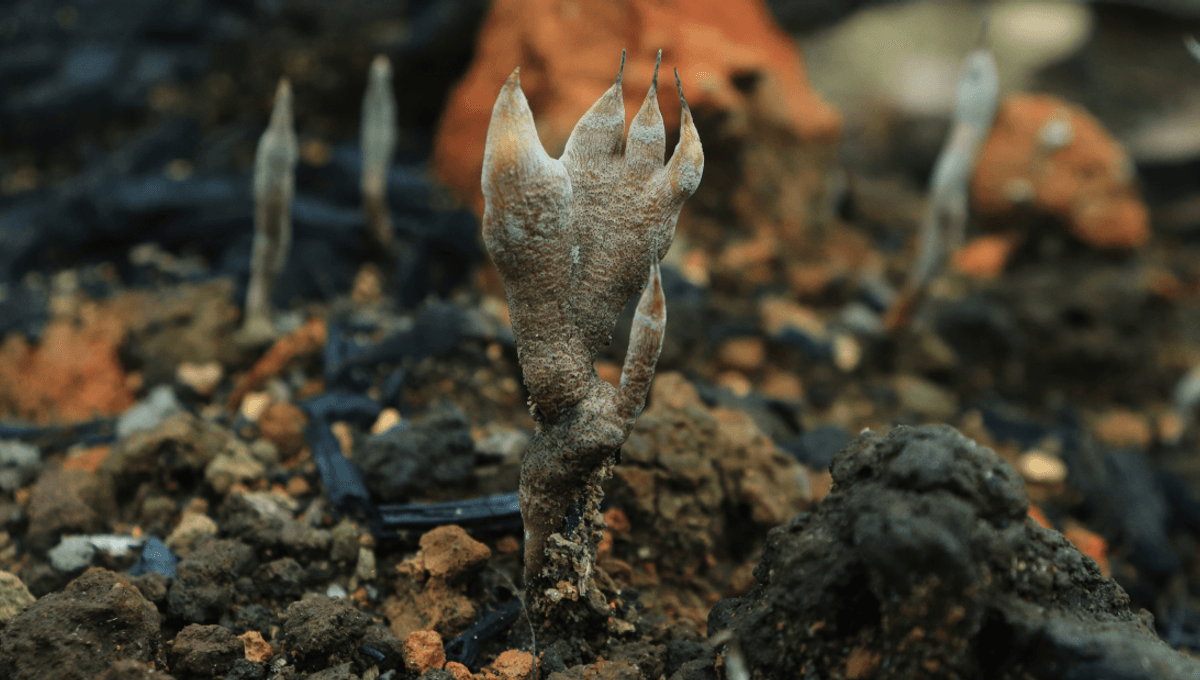
Everything that’s alive has to die eventually (yes, even you, immortal jellyfish). It’s not just a natural part of life but a necessary one, too, as there is so much on Earth that wouldn’t be possible were it not for, well, corpses.
So, is our approach to death getting in the way of new life? Let’s dive into it.
The circle of life
Deep in the ocean, whale carcasses feed an immense diversity of life. Up on land, young trees grow from the remains of dead ones. There are animals that can’t complete their lifecycle without a corpse to lay their eggs in, and as organic matter decays and decomposes, it nourishes the soil with life-sustaining nutrients (yes, even the bones).
Disappearing a corpse is the clean-up job of the decomposition ecosystem. Ranging from microscopic organisms to macro-scavengers like vultures, it encompasses a cascade of characters that swoop in to get what they can from a corpse.
It might sound like being robbed when you’re already down, but the living should be very grateful. Without the decomposition ecosystem, there would be a lot more corpses lying around, increasing the risk of disease spread and making everything just a bit grim and depressing, let’s be honest. So, if it’s so vital, and we understand what makes it such a sophisticated and efficient process, why do we go so far out of our way to avoid it?
Human funerary practices
Humans have been burying their dead for millennia, but as time has gone by, we’ve made the process a bit more complicated. We’ve introduced coffins (or is it caskets?) and invented embalming fluids that allow us to have open casket funerals so the guest of honor can show their face.
Then we have cremation, which can range from ritualistic burning out in nature surrounded by friends and family, or tucked away in crematoriums behind a curtain that conceals the industrial process from view. The end results are very different, from an urn of ashes (or a diamond) to a corpse that can take over a decade to break down, all the while leaching those chemicals into the environment. So, what effect does that have on surrounding ecosystems?
Funerary practices’ impact on the environment
Even a coffin can impact a corpse’s capacity to enrich the environment, and if the body inside is embalmed? Well, things get even more complicated.
“Embalming fluid is often formaldehyde, which bonds together a bunch of different molecules in cells, like DNA and proteins, so tightly microbes can’t break them down,” explains Reactions, a video series produced by the American Chemical Society and PBS Digital Studios. “That’s the whole point of embalming fluid – to tie up our body’s molecules so they can’t be eaten by microbes.”
“If microbes don’t break down a dead body, all of those nutrients won’t get back into the earth: so yes, the circle of life is cut short… or at least delayed for a really, really long time.”
And as for cremation? Well, that has its own downsides.
“Traditional cremation converts your body into mainly three things: Water vapor, ash that ends up on a mantle fertilizing nothing,” says Reactions. “[It also makes] a lot of CO2, which, sure, plants need, but our atmosphere’s not really lacking in CO2 right now, and the cremation process itself is super energy intensive, so it creates even more CO2.”
Eco-friendly funeral alternatives
In light of the impact of our funerary practices on the environment, new options have emerged, such as aquamation, which uses a liquid-based system for breaking the body down. Then there’s human composting, which employs those microbes we had been putting out of work and gets them to break us down into “black gold”.
As we know, there is a host of microbes lining up for the job, as a recent study discovered that human corpses all share one curious thing: their decomposition ecosystem. It looked at the microbial network of corpses buried in different geographical and environment conditions and found key bacterial and fungal decomposers that are typically rare, but consistently present in decaying human flesh.
And if your morbid curiosity isn’t satiated just yet: ever wondered what happens when you die?
Source Link: Burial, Cremation, Embalming: Is The Way We Do Death Harming Earth’s Ecosystems?